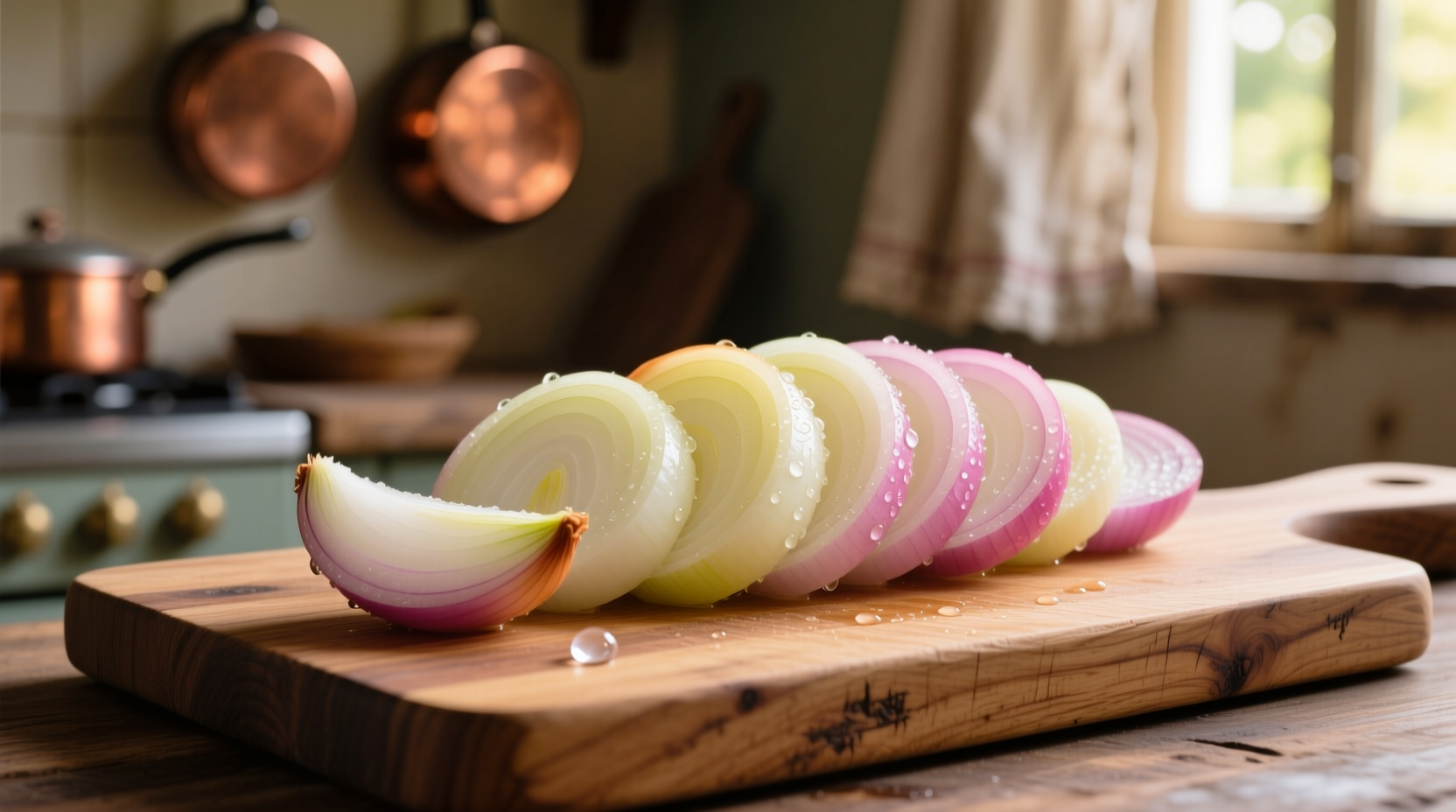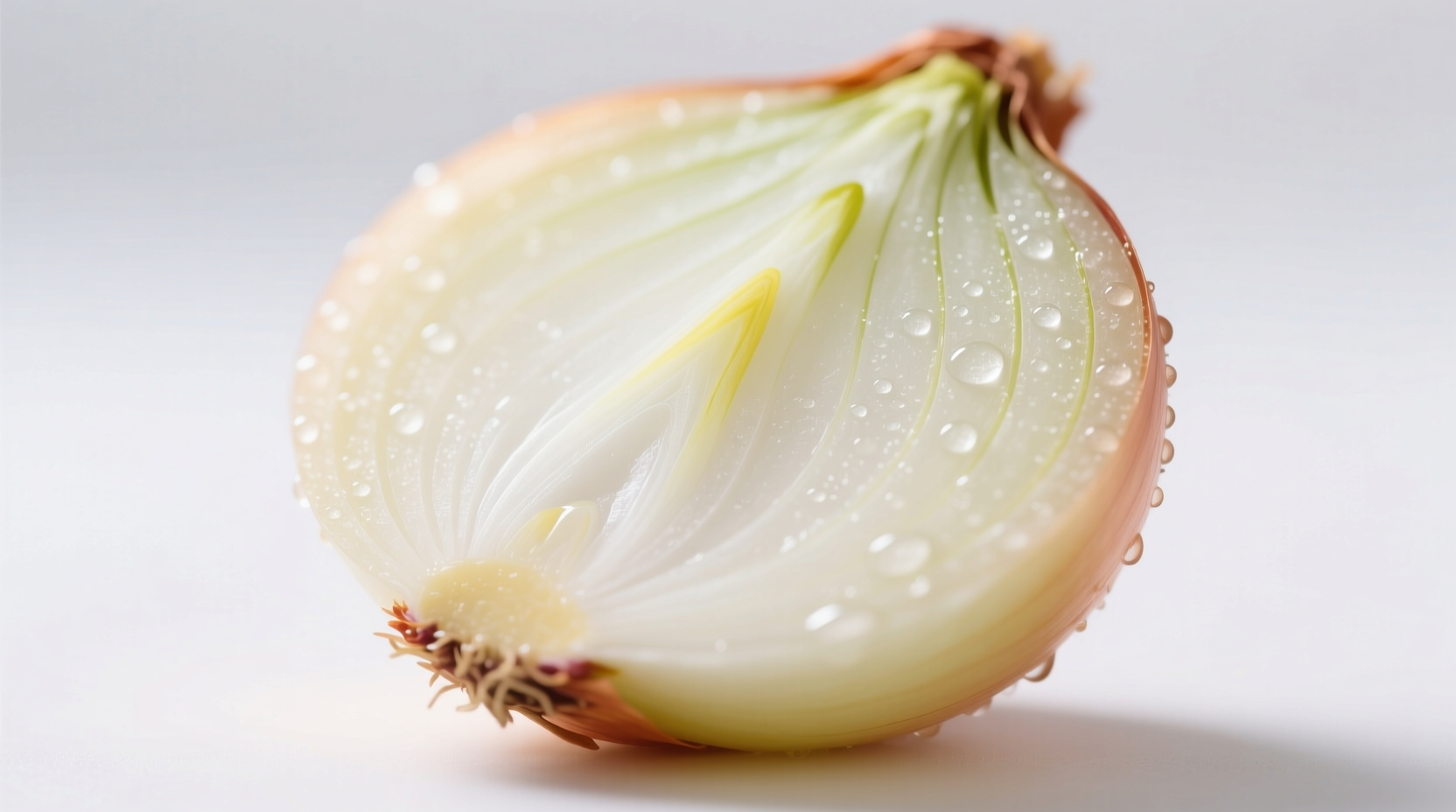Discover exactly when and how to use these culinary gems to elevate your cooking without overwhelming heat. Whether you're crafting delicate salads, sophisticated sandwiches, or elegant appetizers, understanding mild onions transforms ordinary dishes into extraordinary culinary experiences.
What Makes an Onion Mild: The Science Behind the Sweetness
Unlike their pungent yellow and red counterparts, mild onions develop their distinctive flavor profile through specific growing conditions and chemical composition. The key difference lies in soil composition—regions with low sulfur content like the sandy soils of Georgia produce onions with significantly reduced allyl sulfides, the compounds responsible for that characteristic onion "bite."
According to agricultural research from the University of Georgia's College of Agricultural and Environmental Sciences, Vidalia onions must contain less than 0.10% dry weight of pyruvic acid to qualify for the protected designation. This scientific standard ensures consistent mildness that home cooks can rely on when following recipes specifically calling for mild varieties.

Mild Onion Varieties Compared: Finding Your Perfect Match
| Variety | Peak Season | Flavor Profile | Best Culinary Uses | Storage Life |
|---|---|---|---|---|
| Vidalia | April-June | Exceptionally sweet, honey-like notes | Raw applications, sandwiches, salads | 2-3 weeks refrigerated |
| Walla Walla | June-August | Balanced sweet with subtle earthiness | Grilled, caramelized, onion rings | 3-4 weeks refrigerated |
| Maui | Year-round (peak spring) | Delicate sweetness, crisp texture | Sushi, ceviche, fresh salsas | 2 weeks refrigerated |
| Texas Sweet | May-July | Bright sweetness with mild acidity | Pickling, relishes, grilled dishes | 3 weeks refrigerated |
When to Choose Mild Onions: Practical Culinary Applications
Understanding the specific contexts where mild onions shine helps prevent recipe failures and wasted ingredients. Professional chefs consistently reach for mild varieties when:
- Creating raw applications where onion sharpness would dominate (salads, salsas, sandwiches)
- Preparing dishes for sensitive palates including children or those with digestive sensitivities
- Crafting sophisticated appetizers where subtle flavors matter
- Making quick-pickled onions that maintain crisp texture
- Building layered flavors in dishes that won't undergo long cooking times
Conversely, standard yellow onions remain superior for long-simmered dishes like soups, stews, and braises where their robust flavor mellowes beautifully through cooking. The USDA's National Nutrient Database confirms that mild onions contain approximately 5-8% more natural sugars than yellow onions, explaining their superior performance in raw applications.
Mastering Mild Onion Techniques: Professional Chef Secrets
Simply substituting mild onions isn't enough—you need proper handling techniques to maximize their delicate flavor profile:
Selection and Preparation
Choose firm bulbs with dry, papery skins and no soft spots. When cutting, use a sharp knife to minimize cell damage that releases enzymes causing bitterness. Always chill mild onions for 30 minutes before slicing for raw applications—this firms the texture and reduces any residual sharpness.
Cooking Methods That Preserve Sweetness
For caramelization, maintain medium-low heat (around 300°F) and allow 35-45 minutes for proper development without burning. Add a pinch of baking soda (1/16 teaspoon per onion) to accelerate the Maillard reaction while preserving sweetness. When grilling, slice 1/2-inch thick and brush with neutral oil to prevent sticking while maintaining structural integrity.
Raw Application Perfection
For salads and sandwiches, slice onions thinly and soak in ice water for 10-15 minutes to further reduce any lingering sharpness while maintaining crispness. Pair with acidic components like citrus or vinegar in 3:1 ratio (onion to acid) to balance sweetness without overwhelming the delicate flavor.
Storage Solutions for Maximum Freshness
Mild onions' higher water content makes them more perishable than standard varieties. Follow these storage guidelines from the National Onion Association to extend freshness:
- Refrigerate whole, unpeeled bulbs in mesh bags with good air circulation
- Store away from potatoes which emit ethylene gas that accelerates spoilage
- Use within 2-3 weeks for optimal flavor (compared to 1-2 months for yellow onions)
- Once cut, store in airtight containers for up to 7 days
Mild Onion Substitutes When Unavailable
When your recipe calls for mild onions but they're out of season, these alternatives maintain similar flavor profiles:
- Leeks: Use white and light green portions only, sliced thin for raw applications
- Shallots: Milder than yellow onions with delicate flavor (use 1:1 ratio)
- Green onions: White portions provide mild onion flavor with added freshness
- Red onions soaked in milk: Reduces sharpness while maintaining texture
For cooked applications, standard yellow onions become milder when cooked—simmer for 10-15 minutes before adding other ingredients to reduce pungency while maintaining structure.











 浙公网安备
33010002000092号
浙公网安备
33010002000092号 浙B2-20120091-4
浙B2-20120091-4